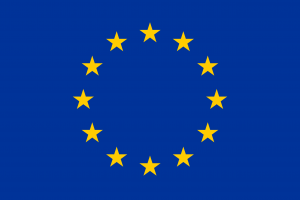Intervention by Commissioner Lenarčič at the launch of the 2024 General Humanitarian Overview
"Check against delivery"
Ladies and gentlemen,
Let me first thank Joyce for presenting the Global Humanitarian Overview. Overview for the coming year.
This publication plays a crucial role in understanding and tackling of the challenges ahead.
I specifically want to underline the fact that the figures which were just presented do not mean that humanitarian needs are reducing.
In fact, the opposite is happening.
These figures are more a result of prioritisation and a sharpening of focus on the most vulnerable.
But the needs are indeed increasing. And humanitarian funding is not keeping up.
This funding gap has to be plugged. There are two ways to do this.
One is to increase funding. The other is to decrease needs.
First: on increasing the funding. There is money out there. The funding gap this year exceeded 40 billion euros for the first time. A huge sum – but still less than the profit made by fossil fuel giant ExxonMobil last year.
Let's focus on the need to increase funding.
One important aspect is the stubbornly narrow base of key donors. The three biggest donors globally, including the European Commission, contribute almost two thirds of global humanitarian funding.
This is not fair. And it is not sustainable.
It is also not sustainable to ask the same narrow donor base to do more. Instead, we must expand the donor base.
In an effort to solve this problem, European Union Member States have established a voluntary target for humanitarian aid. All developed countries already have a commitment to reach 0.7% of gross national income for official development assistance.
EU Member States have agreed that at least 10% of this, 0.07%, should be set aside for humanitarian aid. This is a voluntary target, but an important one.
This commitment can make a difference. The European Commission has been tasked to monitor and report the Member States in their efforts to achieve this target. This will create peer pressure encouraging Member States to reach or surpass this voluntary target.
But we have not stopped there.
We have also decided to reach out to others outside the EU who could and should do more, and we encourage them to also commit to this voluntary target.
These are all countries who have enough resources to do so – such as members of the OECD.
There are also those countries who want to play a more prominent role in global affairs. This is a legitimate aspiration, which we welcome. But this role also comes with increased responsibilities. And humanitarian aid, in my view, is a global responsibility which must be shared by all those who have the ability to do so.
This includes, for instance, all members of the G20.
So this is the logic behind the voluntary targets the EU has established. We feel that if everyone who is in a position to do so works towards this commitment, this will contribute to reducing the funding gap.
The second path to plugging the funding gap is by reducing humanitarian need.
First of all, we have to take into account the fact that conflicts remain the main driver of humanitarian need.
We see this in the ongoing catastrophic humanitarian situation in Gaza.
We can see that in the ongoing Russian war of aggression against Ukraine.
We can see that in the recent dramatic deterioration of the conflict in Sudan.
These are just a few examples. I could go on. It is clear to us all that conflict is a main driver of humanitarian needs.
And so, more needs to be done by peace actors to stop and prevent conflicts.
But there is another driver that has been increasingly visible in producing humanitarian needs. This is the climate crisis.
Here, I think, it should be easier to reduce needs. By investing more in preparedness. By investing more in adaptation. By investing more in mitigation.
And the EU is doing just that. In many ways.
First of all, we try to mainstream disaster preparedness into all our humanitarian aid programmes. We have been able to do so in the large majority of programmes we fund.
Second, we have been calling for an increased portion of climate funding to go to the most vulnerable, most fragile and most conflict-affected countries.
You probably remember that recently the IFRC published data showing that none of the 30 countries most vulnerable to climate change are among the top recipients of climate funding. This has to change.
And I'm very pleased that at COP28, on the Day of Relief, Recovery and Peace on December 3rd, a declaration was endorsed by a large number of UN states on the need to channel more climate funding to the most fragile, most vulnerable, most conflict-affected countries.
These are some of the actions I wanted to outline.
More donors.
More climate resilience.
And I would add a third: there should be greater respect for International Humanitarian Law.
Much of the global humanitarian need we see is a direct consequence of blatant disregard for International Humanitarian Law. Of the fact that civilians are not protected. Of the fact that civil infrastructure is targeted.
This has to stop. Everywhere.
This is the third point I wanted to add to:
- The funding gap that needs to be plugged;
- Climate resilience, which we need to invest in;
- We should also increase respect for International Humanitarian Law.
We must all act together to achieve these goals.
Thank you.
